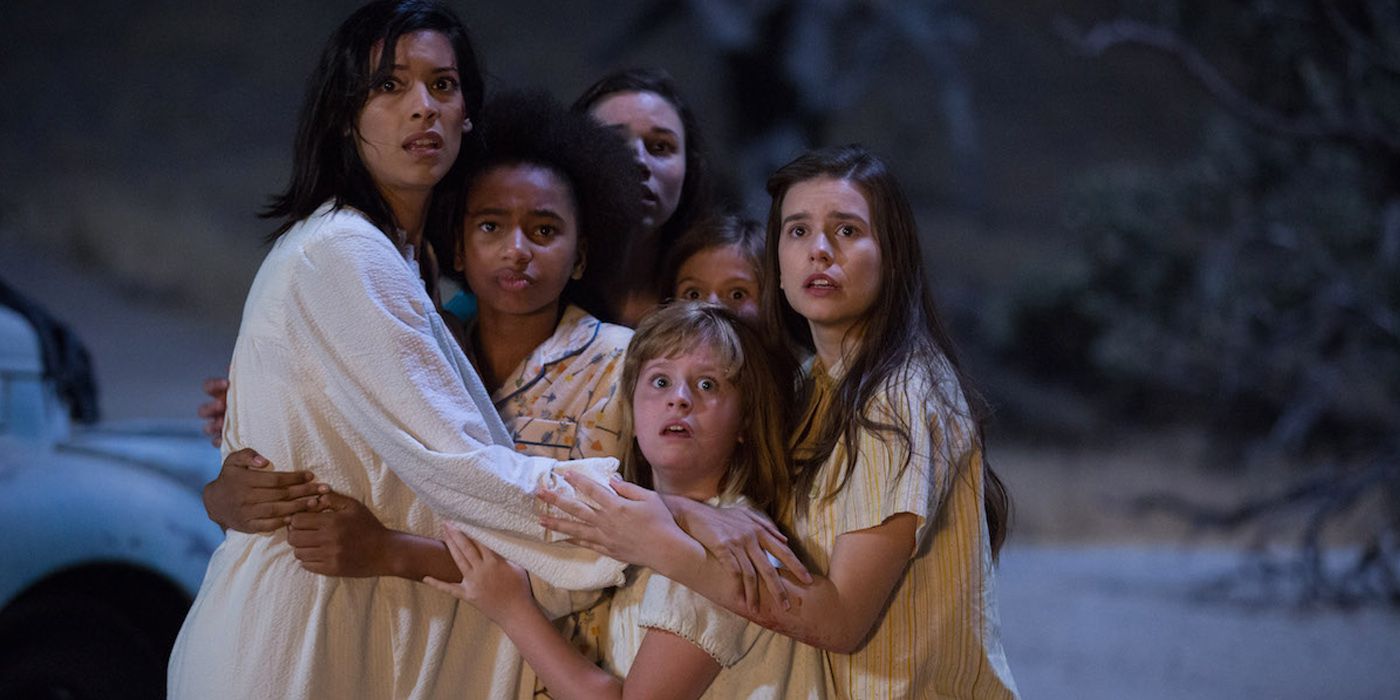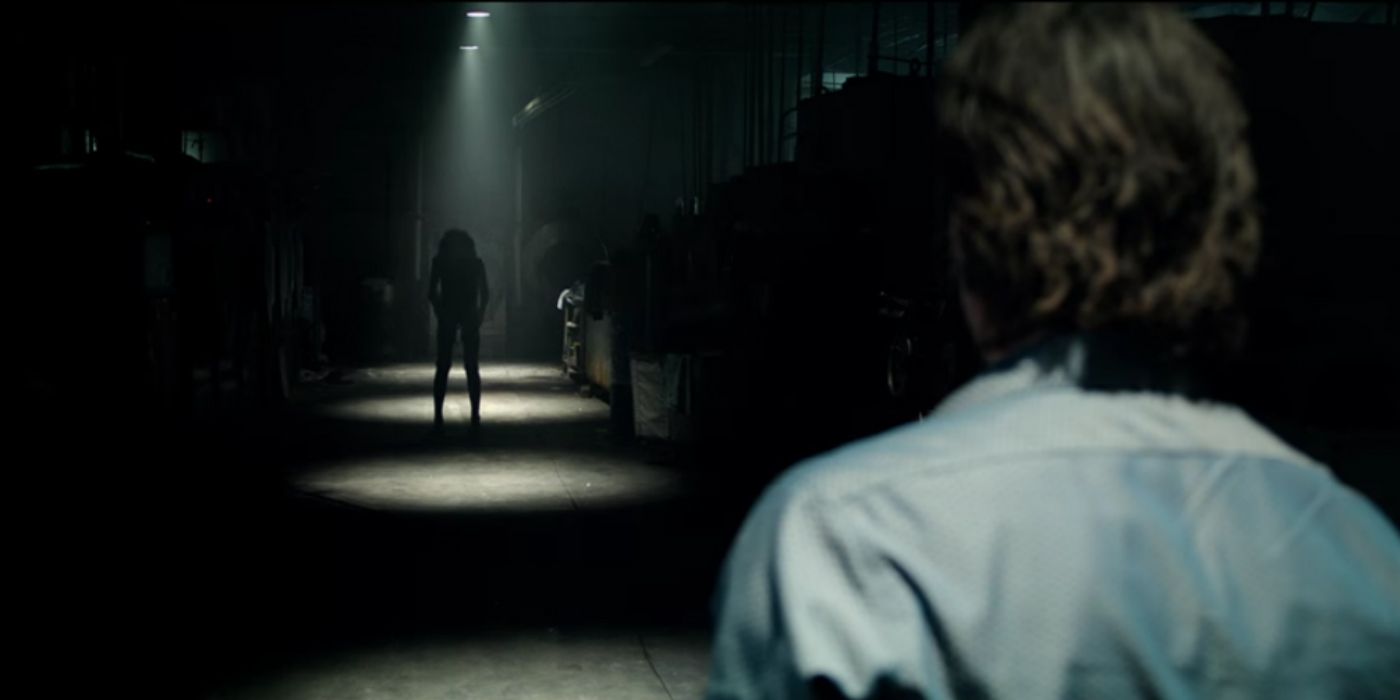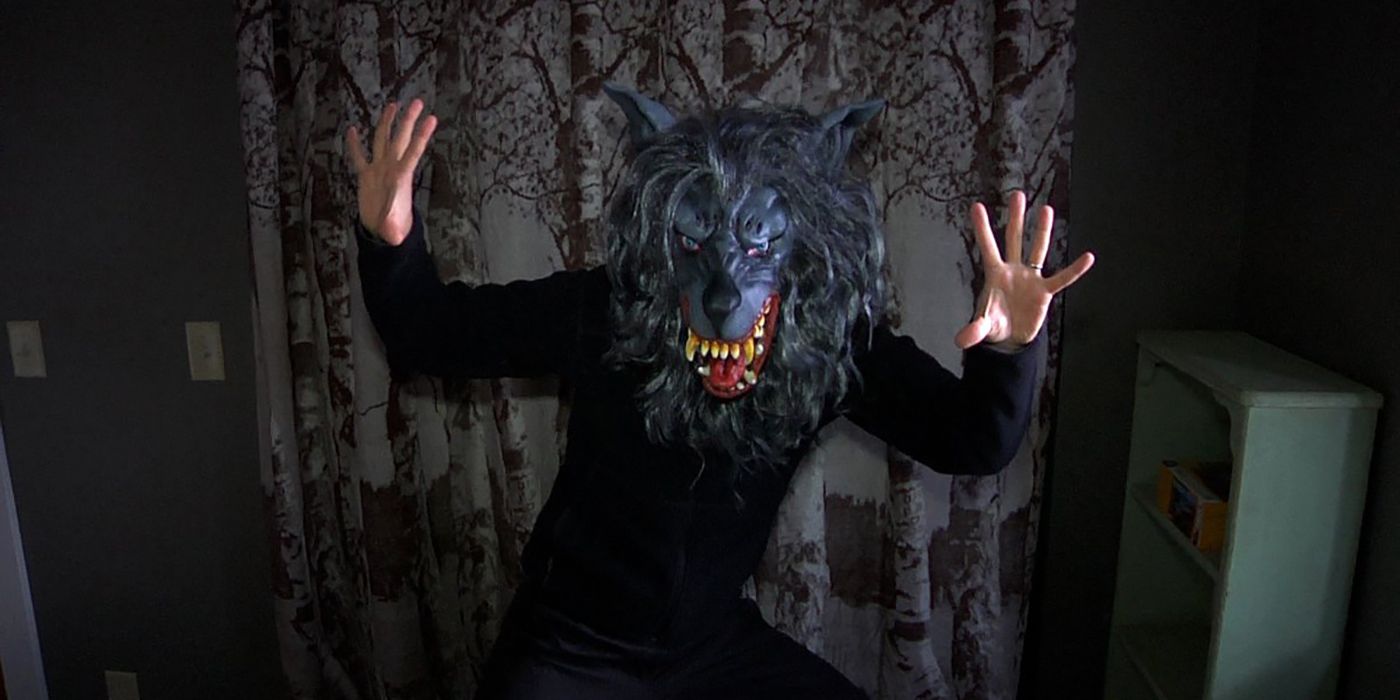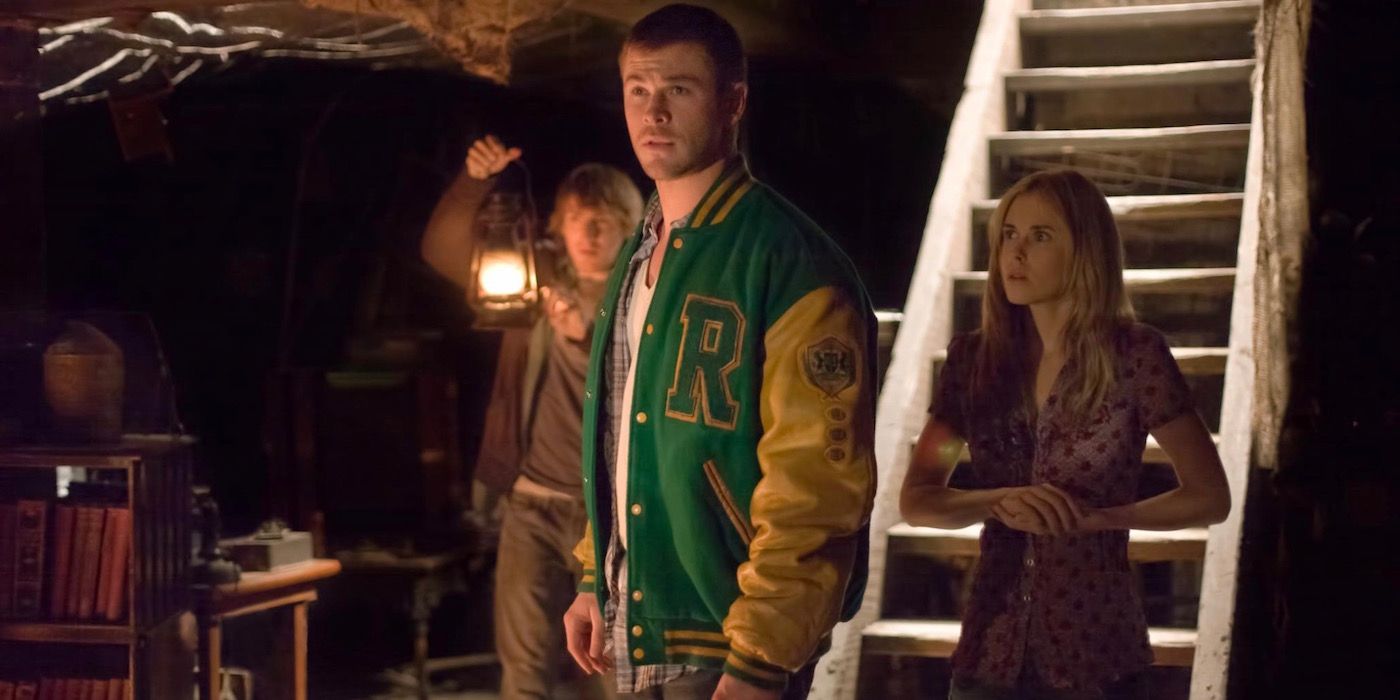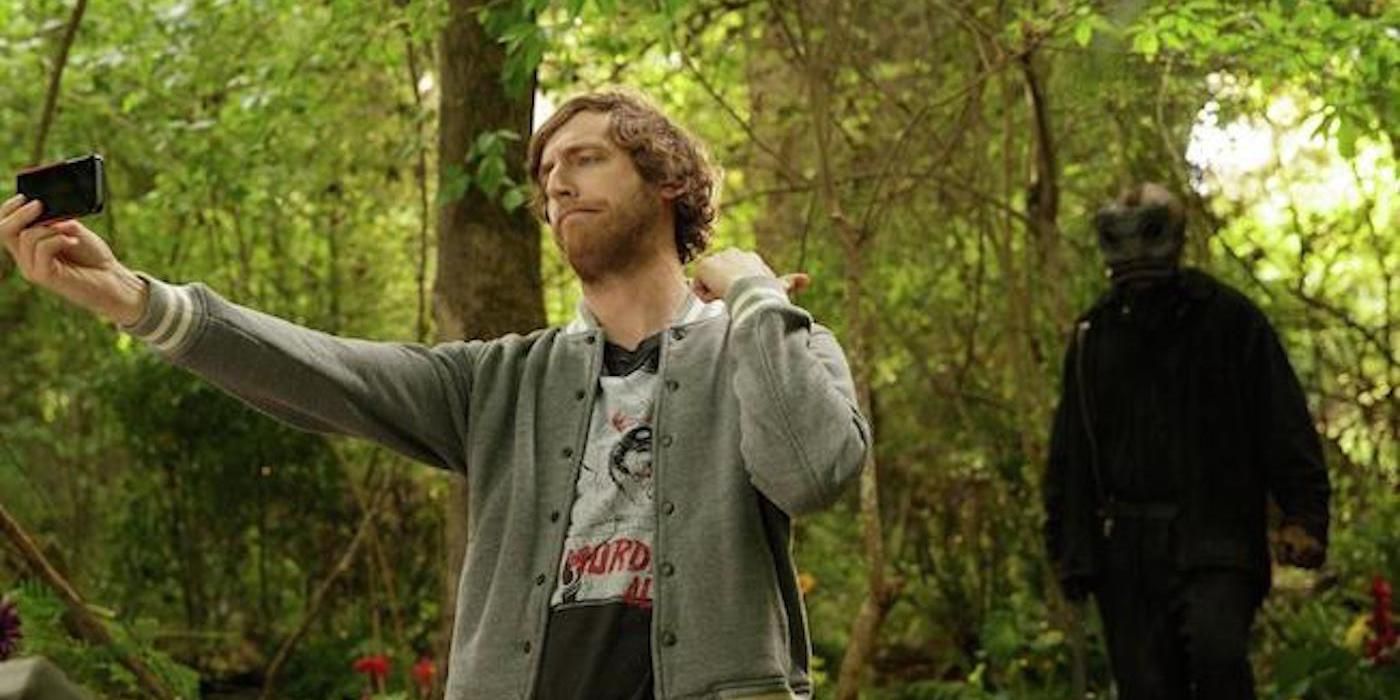Contains minor SPOILERS for Annabelle: Creation.
Watching some horror movies can be a frustrating experience. Audiences are often confronted by illogical maneuvers from the supporting or even main characters. Protagonists routinely split up to investigate a creepy old house at wildly inopportune times or wander around in the dark while a monstrous killer runs around offing their friends. Admittedly, it's difficult to predict what people would do in similar circumstances, but fright film protagonists act as though they're lacking basic survival instincts.
The Conjuring spinoff, Annabelle: Creation, pits a clutch of naive children against a supernatural force and their own underdeveloped common sense. Sure, they’re just kids, but the adults in the picture also appear ill-adjusted to handle any hazardous situations, behaving in a manner contrary to most viewers.
So, why is practically every scary movie is populated by fools? Science and human nature, as well as storytelling concerns, offer a few theories about horror movie's dimmest bulbs.
The Taste of Fear
Just about every horror film revolves around impending doom. As a result, fright-makers need to crank up the threat quotient or face the wrath of a bored audience. Filmmakers can do so in several manners, such as cutting down a batch of stock characters – leaving the audience unsure of who will survive – or developing a strong base cast and then dangling the hand of fate above them. Either way, the basic premise must threaten the status quo of the cast as well as toying with the emotions and expectations of viewers.
Even though constructing a cast of generic archetypes feels like the lazy way out, it does allow directors some wiggle room to play with the wooden cast – as seen in self-aware outings like Scream or Shaun of the Dead – or at least instill an atmosphere of nihilistic dread. In most cases, stock characters exist for the sole purpose of eliciting a response.
While the human brain is still very much a mystery, a recent study (via Wired), conducted by Tel Aviv University neuroscientist Talma Hendler, examined the empathic response of viewers while screening different clips. By monitoring her subject’s brain waves, as well as polling their emotional states, Hendler theorized that human minds identify with characters in two major ways. Most prominently, at least in cinematic productions, she found two particular scenarios create the most dramatic, near-instantaneous responses: embodied empathy or mental empathy.
Embodied empathy involves viewers' guttural reaction to an on-screen event, such as a hug or punch. Conversely, mental empathy forces the audience to comprehend a complex emotional situation, such as a character dealing with the effects of disease or other life transitions. While embodied empathy elicits a more complex response, mental empathy produces powerful, albeit visceral, one.
Well before the recent study, numerous directors chose to subject viewers to jolt scares. shock deaths, and gross-outs as a build up to the final showdown. Each character wanders into a deadly scenario, ratcheting up the suspense and the audience's adrenaline levels as well, before getting wiped out. Just as our heartbeats return to normal... Wham! The next cast member gets sucked into a closet by an evil spirit and throws everyone off-balance again.
Aside from affirming that nobody is safe, the death of an undeveloped supporting cast member, in theory, shouldn’t detract from the overall emotional impact of the main protagonists. Still, cheap thrills diminish the overall impact of the movie. If a film throws too many shocks at people, it can ruin its own suspension of disbelief.
For many studios, though, the freak-out factor is enough to sell tickets for that all-important opening weekend. Annabelle: Creation itself uses each startle scare to good effect but at the expense of any real, empathetic development, for the most part, leaving the audience with a case of the jitters instead of an in-depth connection to the characters.
Of course, constructing a cinematic roller coaster isn’t the only reason to build a movie based on shallow archetypes.
Audience Transference
If we're so frustrated with stupid characters, why do we flock to middle-of-the-road horror flicks? Is everybody really that hard up for a good scare? Perhaps. But there may more primordial forces at work in terror tales populated by idiots. Watching our oft-unrealistic cultural ideals die is also gratifying.
The best recent meta-horrors, such as Cabin in the Woods, exploit these age-old tropes but give them a new twist. Featuring five stereotypical friends who drive to the titular cottage, Cabin turns its archetypes into the subject of a disturbing ritual, as they're sacrificed to an ancient cultural analog-starved deity according to a set of horror cliches. At its best, the multifaceted flick picks up on the inherent catharsis in watching overwrought conventions die.
Stock horror stables usually consist of the jock, the cheerleader, the nerd, the stoner, the loner, and the doomed sweetheart or a similar configuration of one-attribute players. Each symbolizes a personality trait the viewers either desire, believe unattainable, or identify with. For instance, the jock brims with confidence despite being a meathead that masks his own insecurity with bravado. Anytime he charges into a creepy cabin, often in an attempt to prove his manliness, and subsequently gets skewered by the killer, the audience squeals with guilty delight. The monster isn't just stabbing the jock, but also the unrealistic ideal set forth by society – which feels like a win for the underdog, the self-conscious, the bullied, and those trapped by unrealistic expectations.
Cramming a picture full of empty archetypes makes for a fantastic emotional transference. One-dimensional characters embodying obnoxious, rude, or mean people act as scapegoats for our own frustrations with work, dating, or family that make life miserable. Every misstep they take is a reflection of their foolishness on a societal level and proof of our superiority, hypothetically anyway.
Plus, constructing a complicated, intelligent character is a lot of work, especially if they just wind up as monster fodder. It's easier to justify their foolhardy behavior in the face of danger. No one's surprised when the drunk, horny teens make out into the creepy, abandoned house. But when a smart character flips a stupid switch, it can be far more frustrating to filmgoers. So, even if it feels like a second-rate plot device, the fool's penchant for illogical situations make more sense.
–
Playing off superficiality seems like a cop-out excuse for bland writing, and it often is. Nevertheless, stock roles aren’t new or even a feature reserved for fear cinema. Fairy tales, pulp novels, and comic books have set up archetypal figures as sacrificial lambs for centuries. Horror fans often derive as much pleasure from watching a clutch of one-dimensional players butchered horribly as they do the shared, empathic experience. When the oft-timid final girl (or boy) overcomes an adversary that slaughtered the so-called cultural supermen and women, it can even feel can feel vindicating and even liberating.
Still, a tautly constructed feature with a three-dimensional cast is far preferable to 90 minutes of throttled cardboard cutouts. The best horror cinema, such as the charming Final Girls or freaky-funny Get Out, subvert these tropes while embracing well-developed personalities as well. At this point, though, stupid horror characters are so well-established we doubt they're going anywhere.
Next: Annabelle: Creation – The Evil Doll’s Origins Explained
Source: Wired

